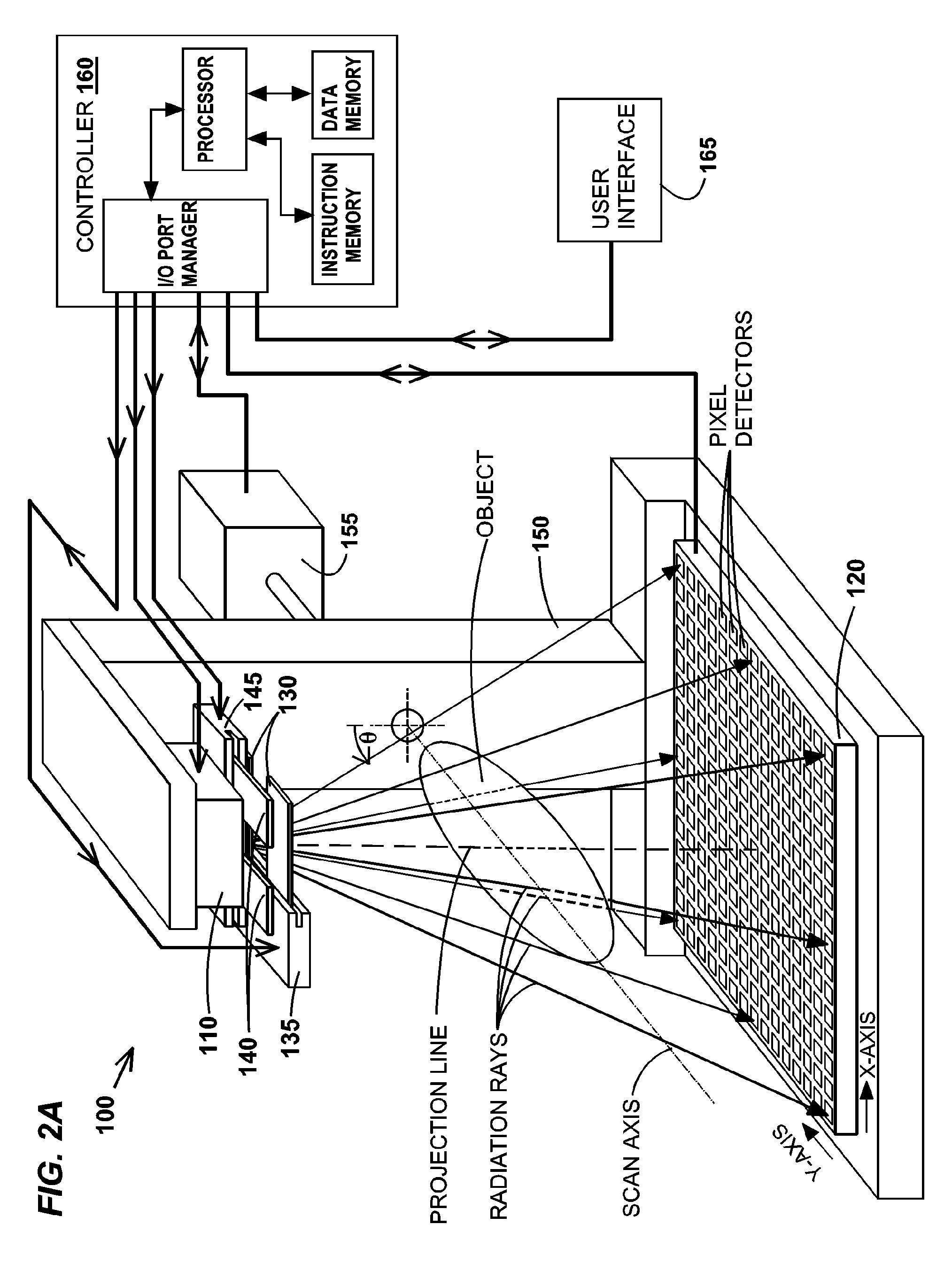Methods, systems, and computer-program products for estimating scattered radiation in radiographic projections
a radiographic projection and radiographic technology, applied in material analysis using wave/particle radiation, instruments, nuclear engineering, etc., can solve the problems of numerical errors in image reconstruction algorithms, phantom images, loss of resolution and contrast in ct image slices produced,
- Summary
- Abstract
- Description
- Claims
- Application Information
AI Technical Summary
Benefits of technology
Problems solved by technology
Method used
Image
Examples
Embodiment Construction
[0045]System Overview. FIG. 2A is a schematic diagram of a first exemplary imaging system 100 according to the system inventions of the present application. System 100 comprises a radiation source 110, a two-dimensional imaging device 120 disposed opposite to radiation source 110 along a projection line, a first set of fan blades 130 disposed between the radiation source and the two-dimensional imaging device, a first fan-blade drive 135 that holds fan blades 130 and sets their positions. The edges of fan blades 130 are oriented substantially perpendicular to the scan axis (defined below), and are substantially parallel with the trans-axial dimension (defined below) of imaging device 120. As an option, system 100 may further comprise a second set of fan blades 140 disposed between the radiation source and the two-dimensional imaging device, and a second fan-blade drive 145 that holds fan blades 140 and sets their positions. The edges of fan blades 140 are oriented substantially para...
PUM
 Login to View More
Login to View More Abstract
Description
Claims
Application Information
 Login to View More
Login to View More - R&D
- Intellectual Property
- Life Sciences
- Materials
- Tech Scout
- Unparalleled Data Quality
- Higher Quality Content
- 60% Fewer Hallucinations
Browse by: Latest US Patents, China's latest patents, Technical Efficacy Thesaurus, Application Domain, Technology Topic, Popular Technical Reports.
© 2025 PatSnap. All rights reserved.Legal|Privacy policy|Modern Slavery Act Transparency Statement|Sitemap|About US| Contact US: help@patsnap.com



